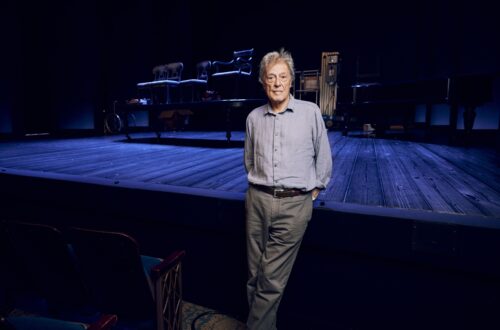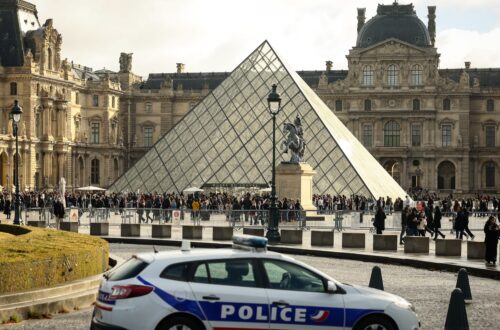Claudia Cardinale, whose presence on screen seemed to merge classical elegance with an electric undercurrent of vulnerability, died on September 23, 2025, in Nemours, France, surrounded by her children. She was 87. Her passing marks the end of a luminous era in European cinema, one in which she stood as both muse and rebel, star and survivor.
Born Claude Joséphine Rose Cardinale on April 15, 1938, in La Goulette, a coastal district of Tunis under French protectorate, she grew up with Sicilian roots and a childhood shaped by multiple languages and cultural crosscurrents. She entered the public eye at age 18 by winning a beauty contest in Tunisia, and the prize—a trip to the Venice Film Festival—changed her life forever. Before long producers and directors saw not just a face, but potential.
Her early screen work included Goha (1958) alongside Omar Sharif, but it was her 1960s output that defined her legend. In Rocco and His Brothers, she demonstrated restraint and emotional depth. In The Leopard, she embodied the seductive and shrewd Angelica Sedara, opposite Burt Lancaster and Alain Delon, in a film that became a cinematic milestone in Italian film history. That same year she would appear in Federico Fellini’s 8½, bringing brilliance to a film about the creative struggle itself.
Yet Cardinale never wrapped herself in the label of mere beauty. She chose roles that challenged her, that carried weight. In Sergio Leone’s Once Upon a Time in the West she played a widowed homesteader who must defend her land, and her performance redefined what women could be in Westerns—agents, not accessories. She balanced sensuality and grit, rebellion and heart.
Her trajectory wasn’t without pain. Behind the glitz of filmmaking lay power struggles and personal secrets she kept close. Before her rise, she endured a trauma that would change her life. When her son Patrick was born in 1958, she made the painful decision to have him raised by her family for a time—to shield him and protect her career. For years, he was presented to the world as her brother before the truth emerged. She navigated romantic entanglements with the producer Franco Cristaldi, who guided her early career and later became a burdensome presence in her life. She later had a long partnership with filmmaker Pasquale Squitieri, with whom she shared both ambition and conflict.
Cardinale resisted Hollywood’s grip. She appeared in English-language films—The Pink Panther, Circus World, The Professionals—but refused to be boxed into the star machinery or reduced to type. She treasured the artistic freedom of European cinema, leaning into roles in French, Italian, German, Swiss, and even Tunisian productions. Filmmakers like Werner Herzog, Luigi Comencini, and Franco Zeffirelli turned to her for parts that demanded soul, not superficial glamour. Her role in Fitzcarraldo, cut short though it was by on-set chaos, remains emblematic: she was not there to decorate the screen, she was there to challenge it.
In later years she expanded into television, stage, and advocacy. She lent her voice to women’s rights and environmental causes, and served as a UNESCO goodwill ambassador. Though her final film credit was The Island of Forgiveness (2022), she remained alive in the public imagination, a living archive of what cinema once was—and what it still might aspire to be.
Even as age and fragility drew near, Cardinale’s spirit never seemed diminished. She was cognizant of legacy but refused nostalgia. She once observed that she had lived many lives through her work: innocent girl, lover, mother, widow, political figure, rebel. She believed in transformation, in the idea that an actor’s job is not to freeze a moment but to channel the flux of human identity.
Her death has prompted waves of tribute. In Italy, President Sergio Mattarella called her an “extraordinary artist” and “unforgettable heroine” of world cinema. In France, President Emmanuel Macron said that she would forever be carried in the hearts of the French, in the eternity of film. Directors, actors, writers across Europe and beyond have recounted how she opened doors, challenged assumptions, and reminded them that strength and vulnerability are not opposites.
For younger filmmakers and lovers of classic cinema, Cardinale represents a rare bridge: between the glamour of old European studios and the restless experimentation of later cinema; between the star system and art house; between screen myth and living womanhood. She never quite fit the mold, and perhaps she was meant not to.
In the end, what remains is more than a filmography or a list of awards. What endures is that face—eyes deep, lips parted, ready to cry or laugh or damn the sorrow of it all. What endures is her posture before the camera, the self-possession and the tremor together. What endures is what she asked of art: that it be alive, that it live in the tension between control and surrender, that it make us feel everything without apology.
Claudia Cardinale’s story ends on Earth, but her presence remains in the light of every frame she inhabited. She gave herself to some of cinema’s greatest directors and to the crevices of human possibility. Her departure reverberates—not as an end, but as a summons: to watch with curiosity, to speak without fear, and to remember that a life lived fully leaves an echo no camera can capture, but which the heart still knows.




